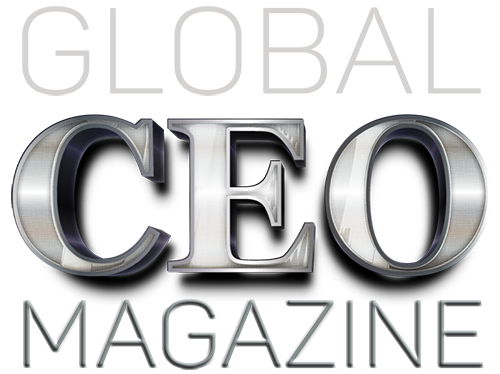Trends and changes can shape the approaches of marketing, especially in the telecommunication industry. Sabrina Zavahir from Global CEO connects with Ms.Kaushala Amarasekara
Assistant General Manager – Marketing Communication Hutchison Telecommunications Lanka (Pvt) Ltd.
Q: Can you describe your experience in the telecommunication industry and how it has shaped your approach to marketing?
My experience in marketing spans over 18 years in brand management, digital marketing, strategic marketing management in various industries out of which, over 12 years was in telecommunication industry. Its one of the most dynamic industries and it has shaped the approach in very positive ways. It has cultivated a deep understanding of the sector’s unique challenges and opportunities.
• Adaptability and Agility: The telco industry is known for its rapid technological advancements and shifting consumer preferences. Over the past 12 years, I have honed my ability to quickly adapt to new trends, whether it’s the advent of 5G, the rise of mobile internet usage, or the growing demand for seamless digital experiences. This adaptability ensures that our marketing strategies are always relevant and impactful.
• Customer-Centric Approach: Telecommunications is inherently customer-focused, requiring a deep understanding of diverse customer needs and behaviours. My experience has taught me to prioritise customer insights and data analytics, enabling us to create personalized and targeted marketing campaigns that resonate with our audience.
• Innovation-Driven Mindset: The competitive nature of the telco industry has ingrained in me the importance of innovation. Whether it’s launching new services, exploring digital marketing channels, or leveraging emerging technologies, I strive to keep Hutch at the cutting edge, ensuring we deliver value and stay ahead of the competition.
Q: What do you see as the biggest challenges facing the telecommunication industry from a marketing perspective, and how do you plan to address them?
The telecommunications industry is undergoing rapid transformation, presenting several significant challenges from a marketing perspective. We recognize these challenges and have developed strategic plans to address them effectively.
• Market Saturation -The telco market is highly saturated, with numerous players offering similar services. Differentiating our brand and services in such a competitive environment is a constant challenge. Hence it is important to offer unique offerings and constantly innovate to be successful. Also strengthening the brand positioning by highlighting our commitment to innovation, reliability, and superior customer service are key in terms of addressing these challenges.
• Evolving Consumer Expectations: Consumers today demand high-speed, reliable connectivity, and seamless digital experiences. They also expect personalised services and instant customer support. Personalised communication to customers on offerings will assist in overcoming this challenge.
• Technological Advancements: The continuous evolution of technology, such as 5G, IoT, and AI, requires us to stay ahead in innovation and communicate complex technological benefits to consumers effectively. Creating education content and thought leadership content that demystify complex technologies like 5G, IoT, and AI, explaining their benefits in simple, relatable terms would “position assist” in overcoming these challenges.
Q: How do you stay informed about industry trends and changes, and how do you incorporate this knowledge into your marketing strategies?
Staying informed about industry trends and changes is crucial for maintaining a competitive edge in the telecommunications industry. Here’s how I stay updated and how I incorporate this knowledge into marketing strategies:
• Professional Networks and Associations:
Being an active member of industry such as SLIM, I currently serve as an Exco member at the Sri Lanka Institute of Marketing and this provides networking opportunities with fellow marketers and I do participate in forums and discussion groups where industry professionals share insights and experiences.
Conferences and Webinars:
• Attending industry conferences and summits is essential for networking and learning about cutting-edge technologies and innovations.
• I also engage in webinars and virtual events hosted by industry experts to stay informed about emerging trends and technologies.
I also do my own research and do learn from the content on social media platforms which are relevant and also listen to many thought leaders even on youtube to get myself updated on the latest marketing trends.
We also meet various suppliers and agencies who we could discuss potential opportunities and how we can keep going.
Based on the latest trends, we develop innovative marketing campaigns that highlight Hutch’s commitment to staying at the forefront of technology. For example, campaigns using AI technology and CGI etc., and utilising emerging marketing channels, such as augmented reality (AR) or virtual reality (VR), to create immersive customer experiences.
This ensures our marketing strategies are forward-thinking and aligned with future industry directions.
Q: Telecommunication is a rapidly evolving industry. How do you ensure that your marketing strategies remain agile and adaptable to changes in technology and consumer behaviour?
Implementing agile marketing strategies allows us to quickly adapt to industry changes. This involves continuous testing, learning, and optimization of marketing campaigns based on real-time data and feedback. Flexibility in our marketing plans ensures we can pivot quickly in response to new trends or market disruptions. This includes having contingency plans resource to capitalize on new opportunities or address unforeseen challenges.
We foster close collaboration between our marketing, product development, and technology teams. This ensures that our marketing strategies are aligned with the latest technological innovations and product updates, allowing us to effectively communicate new features and benefits to our customers.
By maintaining a strong focus on customer needs and feedback, we can better understand and anticipate changes in consumer behaviour. Regular customer surveys, focus groups, and social listening are some of the methods we use to stay connected with our audience and adapt our strategies accordingly.
By embracing these practices, we maintain the agility and adaptability necessary to thrive in the dynamic telecommunication industry. This proactive approach enables us to stay relevant and effectively meet the evolving needs of our customers.
Q: What metrics do you use to measure the effectiveness of your marketing campaigns, and how do you use these insights to optimize future initiatives?
We use a variety of metrics across different mediums to measure the effectiveness of our marketing campaigns.
In digital marketing, we rely on direct measurements such as Click-Through Rate (CTR), Conversion Rate, Cost Per Acquisition (CPA), and Return on Ad Spend (ROAS). These metrics provide immediate feedback on the performance of our online ads and help us understand the direct impact of our digital efforts.
Additionally, we track revenue growth and pack activations to gauge the financial success of our campaigns. These metrics indicate how well our marketing efforts are translating into sales and customer engagement, offering a clear picture of our overall return on investment.
Furthermore, we evaluate general brand measurements such as Top of the Mind Awareness (TOMA) and various brand health parameters. These include metrics like brand recall, brand sentiment, and brand equity. These insights help us understand our brand’s position in the market, consumer perceptions, and long-term brand strength.
By analyzing these metrics, we can identify which aspects of our campaigns are most effective and which areas need improvement. This data-driven approach allows us to optimize future initiatives, ensuring we allocate our resources efficiently and continue to enhance our marketing strategies.
Q: How do you approach targeting and segmentation in a diverse market like telecommunications, where consumer needs and preferences can vary widely?
In the diverse and dynamic telecommunications market, our approach to targeting and segmentation recognizes the wide range of consumer needs and preferences. Instead of focusing on a single target segment, we embrace a multi-faceted strategy that allows us to address the distinct requirements of various customer groups.
We begin by conducting thorough market research to understand the full spectrum of consumer needs, behaviours, and preferences. This involves analysing demographic data, psychographic profiles, usage patterns, and customer feedback. By gaining deep insights into the market, we can identify key segments that require tailored marketing approaches.
We employ a dynamic segmentation model that goes beyond traditional demographic and psychographic criteria. This includes behavioural segmentation, based on usage patterns and service preferences, and technographic segmentation, which considers consumers’ technology adoption levels and device usage. This holistic view ensures we capture the nuances of our diverse customer base.
Adaptive Communication Channels: We utilise a variety of communication channels to reach our different segments effectively. Whether it’s through social media, SMS campaigns, or traditional media, we ensure that our messaging is consistent yet tailored to the preferences of each segment. This omni-channel approach helps us engage customers wherever they are.


